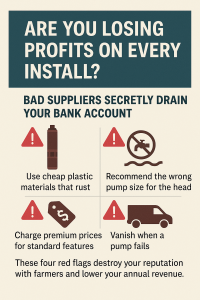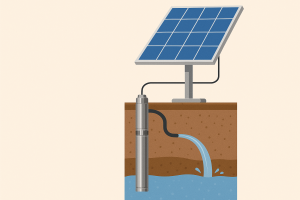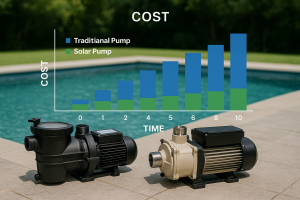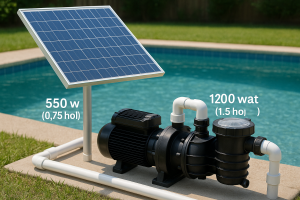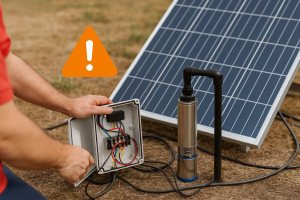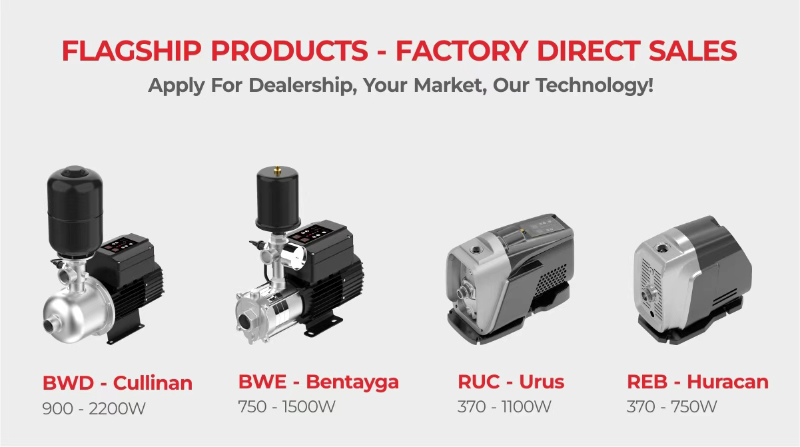Choosing the wrong solar pump wastes your money and fails to deliver the water you need. This decision can be confusing. I'll guide you to make the perfect choice.
To choose the right solar pump, first determine your water needs. You must calculate your required flow rate and total dynamic head (the total height you need to lift the water). Then, you match these numbers to a specific pump model and the correct solar panel power.
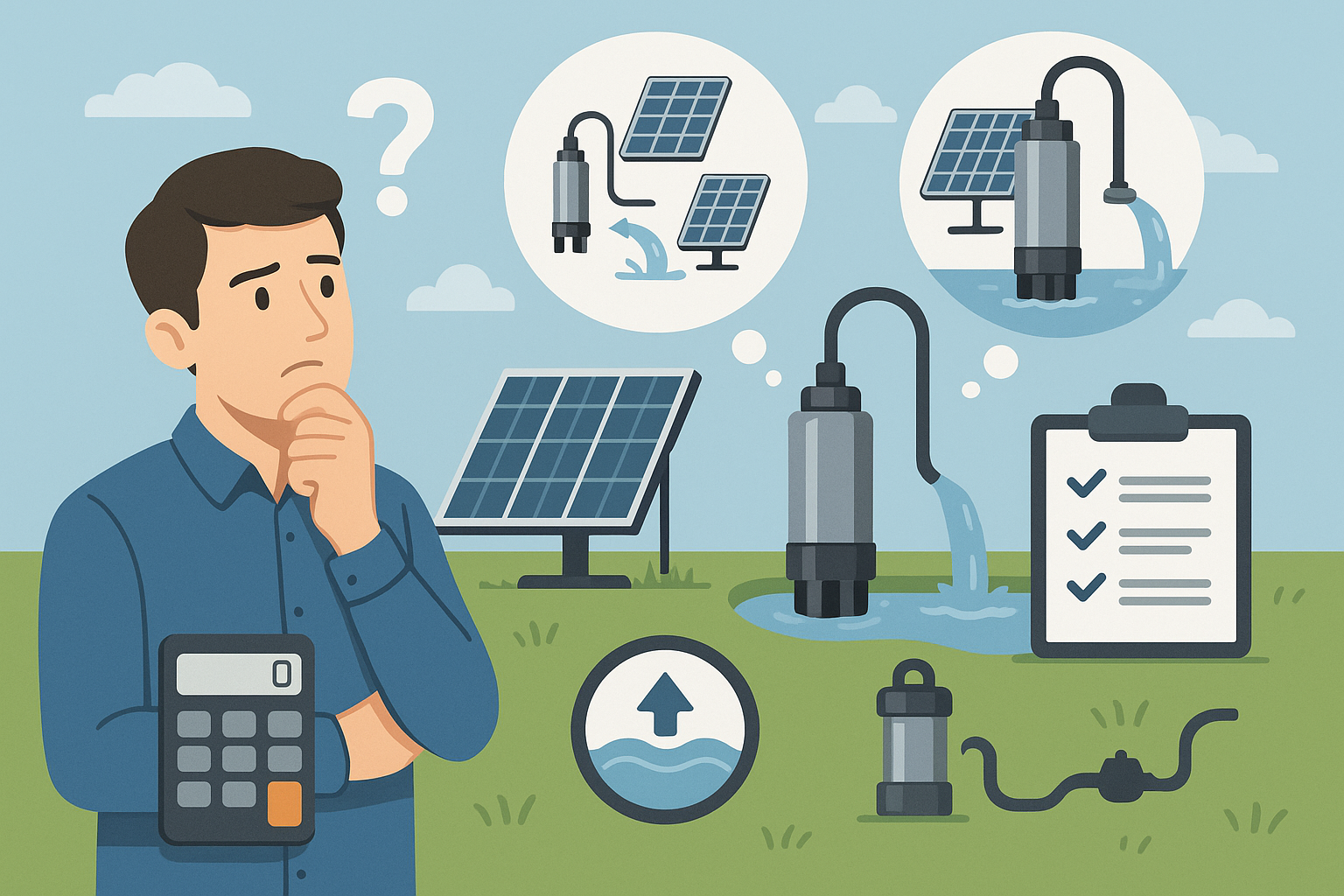 "Solar Submersible Pump Installation"
"Solar Submersible Pump Installation"
Getting these basics right is just the start of the process. But the details are what make a system work perfectly for years without problems. Let's look closer at each step. This will help you choose with confidence and avoid costly mistakes down the road.
What Size Solar Water Pump Do I Need?
Picking the wrong size means you either don't get enough water or you waste money on an oversized pump and panels. This choice is critical. Let me help.
To size your pump, you need two key numbers: the flow rate and the total dynamic head (TDH). Flow rate is how much water you need. TDH is the total height the water must be lifted. These numbers determine the pump's power.
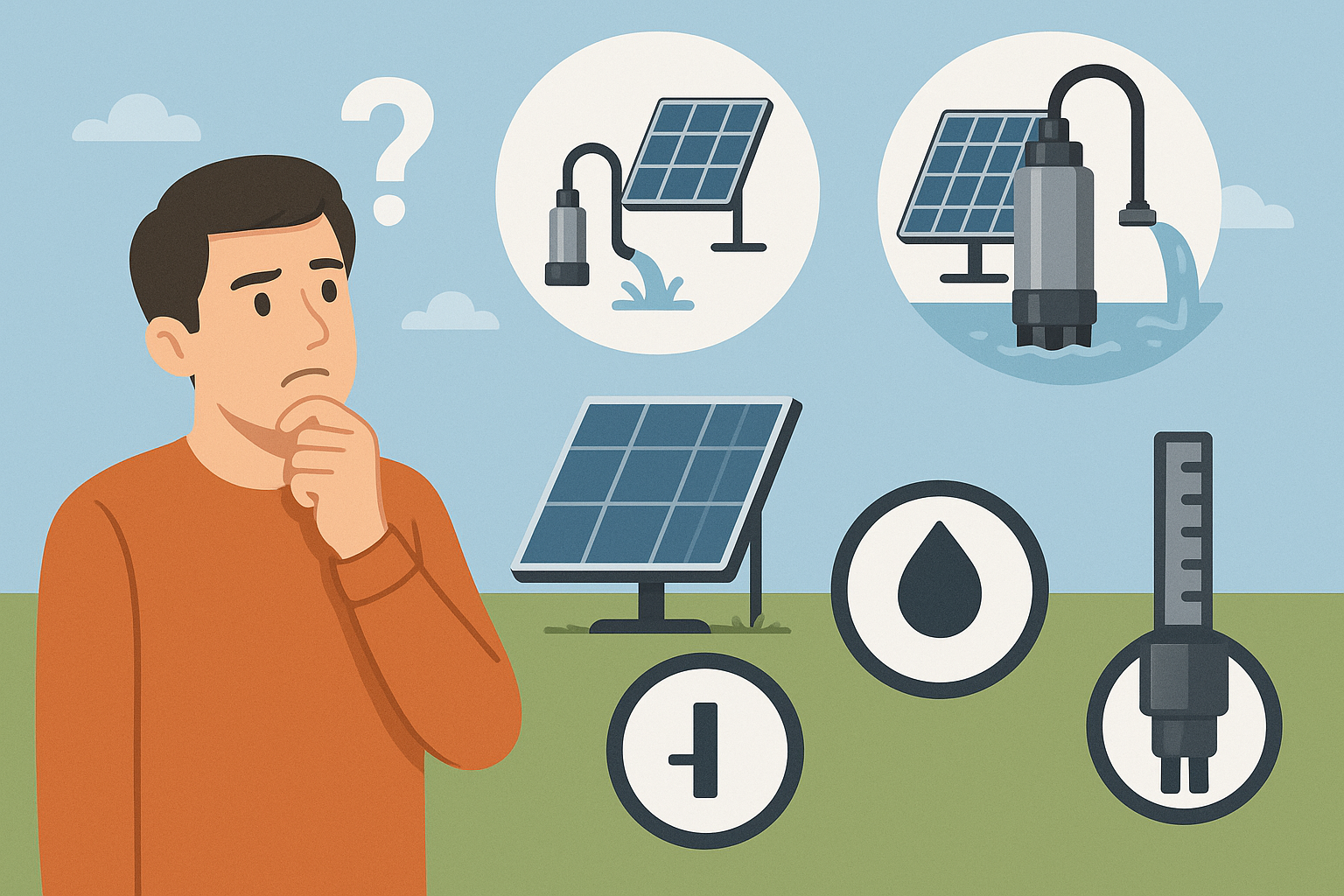 "Calculating Total Dynamic Head"
"Calculating Total Dynamic Head"
Let's dive deeper into these two very important factors. I often explain this to distributors like Daniel in South Africa, because getting this right is the foundation of a reliable irrigation system for his farmer customers.
Calculating Your Flow Rate
First, think about how much water you need in a day. This is your flow rate, usually measured in Gallons Per Minute (GPM) or Liters Per Minute (LPM). Do you need water for a small farm, for livestock, or for a home? For example, a small vegetable farm might need 2,000 gallons per day. If you have 5 peak sun hours, you would need a pump that can deliver 2000 gallons / 5 hours / 60 minutes = 6.7 GPM. Always plan for your busiest day to make sure you have enough.
Understanding Total Dynamic Head (TDH)
Second is the Total Dynamic Head, or TDH. This is the total pressure the pump must overcome. It has two parts:
- Static Head: The total vertical distance from the water level in your well to the final destination, like a storage tank.
- Friction Loss: The pressure lost as water moves through pipes. Longer pipes and more bends create more friction.
For deep wells, the static head is the biggest factor. Our HYBSUN multi-stage submersible pumps are designed for these high-head situations, pushing water up from great depths efficiently.
| Component | Example Calculation |
|---|---|
| Static Head | 100 meters (well to tank) |
| Friction Loss | 5 meters (from pipes) |
| Total Head (TDH) | 105 meters |
How Do I Select the Best Solar Pump Model?
So many pump models look the same online. It is hard to know which one is durable and which one will fail. I will show you what to look for.
Look beyond just the size. Check the pump’s materials, like stainless steel for durability. Choose an efficient motor, like a brushless DC type. Also, check for features like dry-run protection and a good warranty, which we offer for 3-5 years at HYBSUN.
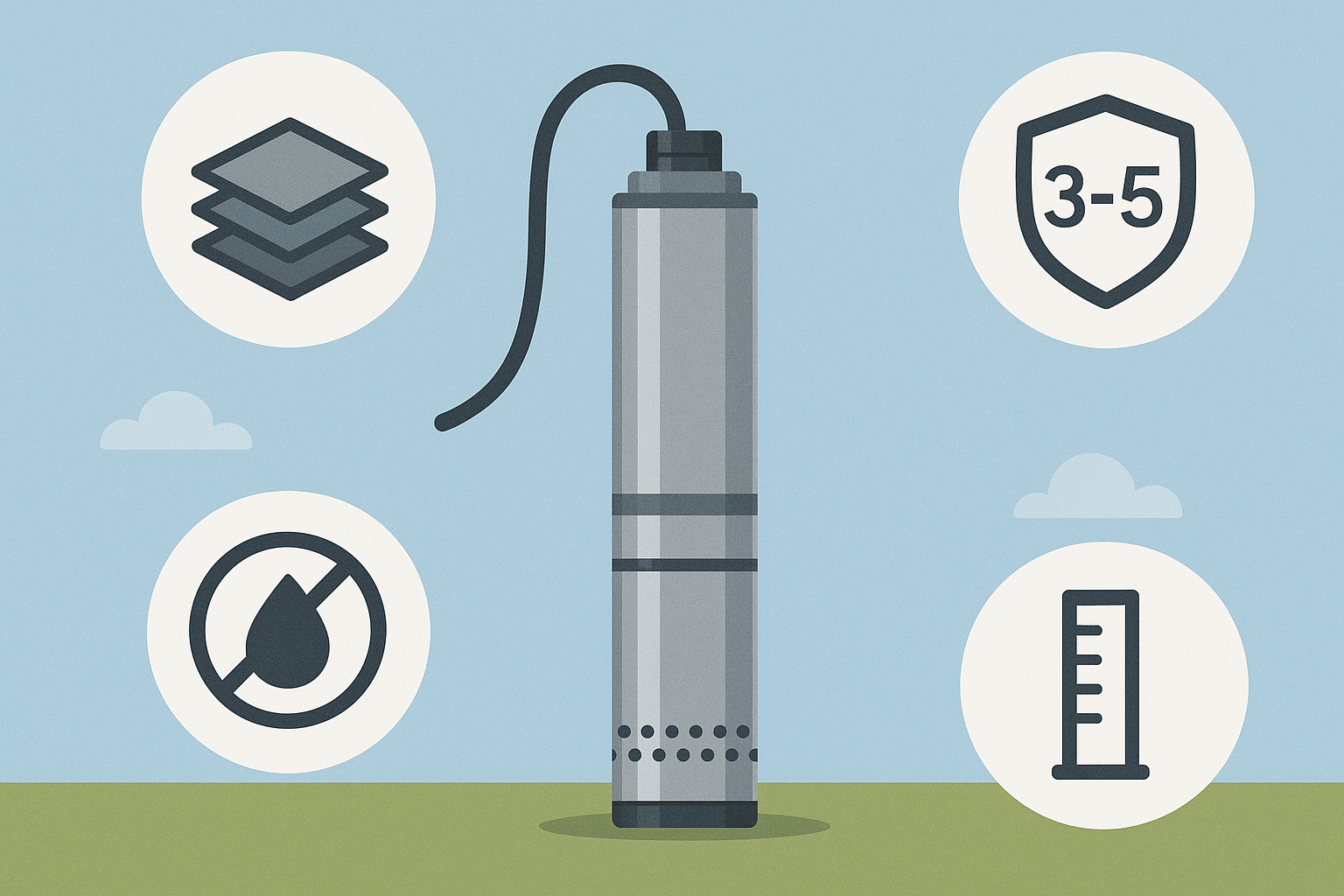 "Durable Solar Pump Motor"
"Durable Solar Pump Motor"
As a factory owner, I know that the quality is in the details. A pump is a long-term investment, especially for business owners who resell them to farmers. You need a product you can trust. Here are the things we focus on at HYBSUN to build that trust.
Materials and Motor Type
The pump's body and motor should be made of corrosion-resistant materials. We use stainless steel for our submersible pumps. This is very important in different water conditions and prevents rust over many years. Inside the pump, the motor is the heart. We use Brushless DC (BLDC) motors in our pumps. They are more efficient than older motor types and have a longer life because there are no brushes that wear out. This means less maintenance and more water pumped for the same amount of sunlight.
Certifications and Protections
For distributors who sell in different countries, certifications are necessary. Our pumps have CE certification, which means they meet European safety and quality standards. A pump must also protect itself. Our pumps and inverters include built-in protections for:
- Dry Run: Stops the pump if the well runs out of water.
- Overload: Prevents the motor from burning out.
- Overvoltage: Protects against power surges.
These features, plus a strong 3-5 year warranty, give our partners peace of mind.
How Do I Size the Solar System for My Water Pump?
A great pump is useless without enough power. But buying too many solar panels is a waste of money. Let me explain how to match your solar array perfectly.
Look at the pump’s power rating in watts. As a rule, your solar panel array should have a wattage that is 1.3 to 1.5 times the pump's wattage. This ensures the pump runs well, even on slightly cloudy days. Our MPPT inverters help maximize this power.
 "Solar Panels for Water Pump"
"Solar Panels for Water Pump"
Getting the power system right is just as important as choosing the pump. You need a balance. You want enough power to get the job done without overspending on panels you don't need. This is a common question from new buyers, so let's break it down.
Calculating Solar Panel Wattage
Here is a simple formula to get started:
Pump Power (Watts) x 1.3 = Minimum Solar Array Power (Watts)
So, if you have a 750-watt pump, you would need at least 750 x 1.3 = 975 watts of solar panels. We recommend this "oversizing" for a few reasons. It helps the pump start up easily in the morning and keep running during brief cloudy periods. It also accounts for the small power losses that happen in any system. This ensures you get a reliable water supply throughout the day.
The Importance of an MPPT Inverter
The solar pump inverter is the brain of the system. Our HYBSUN inverters use Maximum Power Point Tracking (MPPT) technology. This smart feature constantly finds the best voltage and current from your solar panels to get the most power possible, with up to 99% efficiency. An MPPT inverter can give you up to 30% more water compared to a system without one. It also enables important functions like soft start, which protects the motor, and automatic water-level control for tanks.
Which Solar Pump Is Better, AC or DC?
You see "AC" and "DC" pumps everywhere. The choice seems technical and confusing. I will make it simple, so you know exactly which type is best for you.
DC pumps are usually more energy-efficient for solar-only systems. AC pumps offer more flexibility, as they can run on solar (with an inverter), a generator, or the grid. We offer both types, including powerful hybrid AC/DC options to cover any situation.
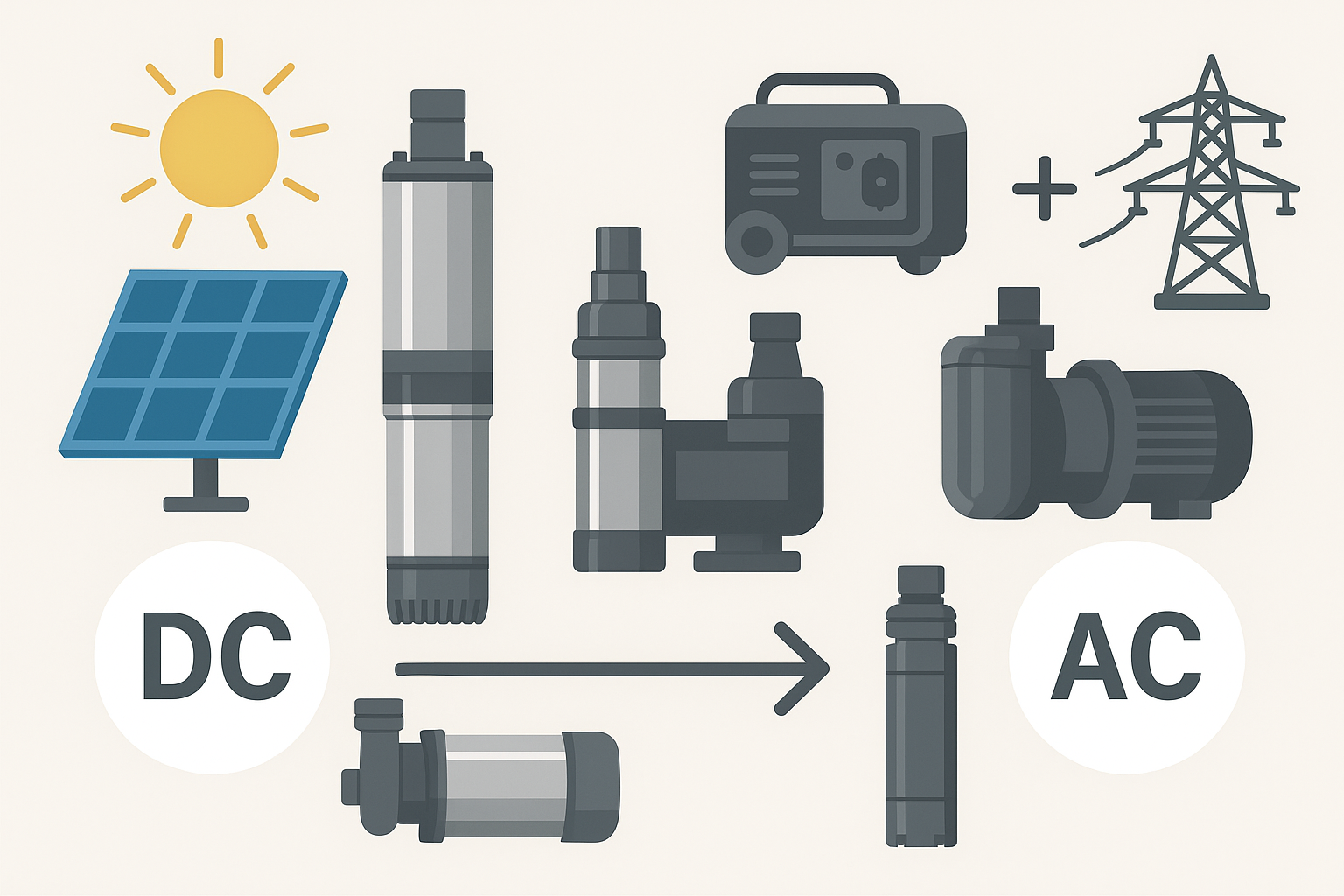 "AC vs DC Solar Pumps"
"AC vs DC Solar Pumps"
This choice depends entirely on your specific needs and power sources. There is no single "best" answer, but there is a best answer for your project. As a manufacturer, we produce both types because our customers around the world have different requirements.
The Case for DC Pumps
Direct Current (DC) solar pumps are the most common choice for off-grid water pumping. Our BLDC pumps are extremely efficient because the power from the solar panels goes directly to the motor with very few losses.
- High Efficiency: More water pumped per watt of solar power.
- Simplicity: Fewer components are needed for a basic setup.
- Ideal for Remote Areas: Perfect for locations with no grid power at all.
When to Choose AC Pumps
Alternating Current (AC) pumps are the standard for grid-powered applications. By using one of our solar pump inverters, you can run a standard AC pump using solar energy.
- Flexibility: Our hybrid inverters let you switch between solar, grid, or generator power automatically.
- Power: AC pumps are available in very large sizes for huge irrigation projects.
- Retrofitting: You can convert an existing AC pump to solar power just by adding panels and one of our inverters.
| Feature | DC Solar Pump | AC Solar Pump (with Inverter) |
|---|---|---|
| Best Use | Off-grid, solar-only applications | Hybrid systems (solar + grid/gen) |
| Efficiency | Very High | High (with good MPPT inverter) |
| Complexity | Simple | More components (inverter) |
| Flexibility | Low (solar only) | Very High (multiple power sources) |
Conclusion
Choosing the right pump means matching head and flow to a durable model. Sizing the solar array correctly ensures it runs reliably. We are here to help you succeed.
